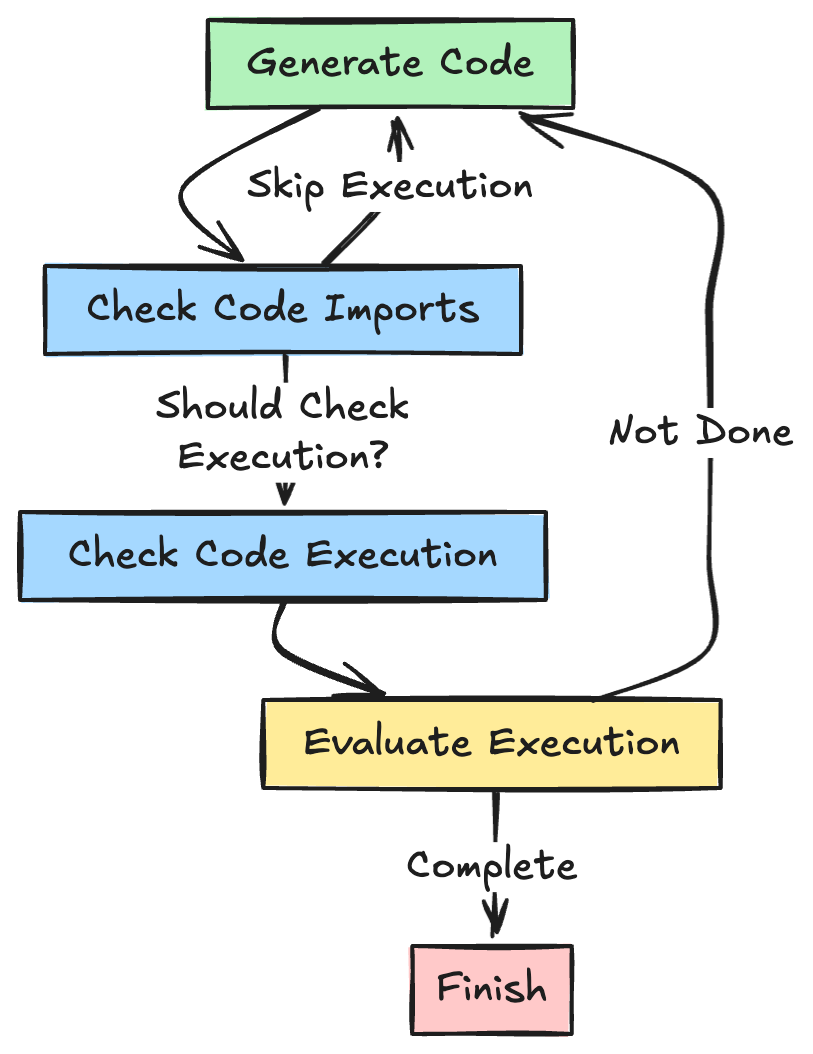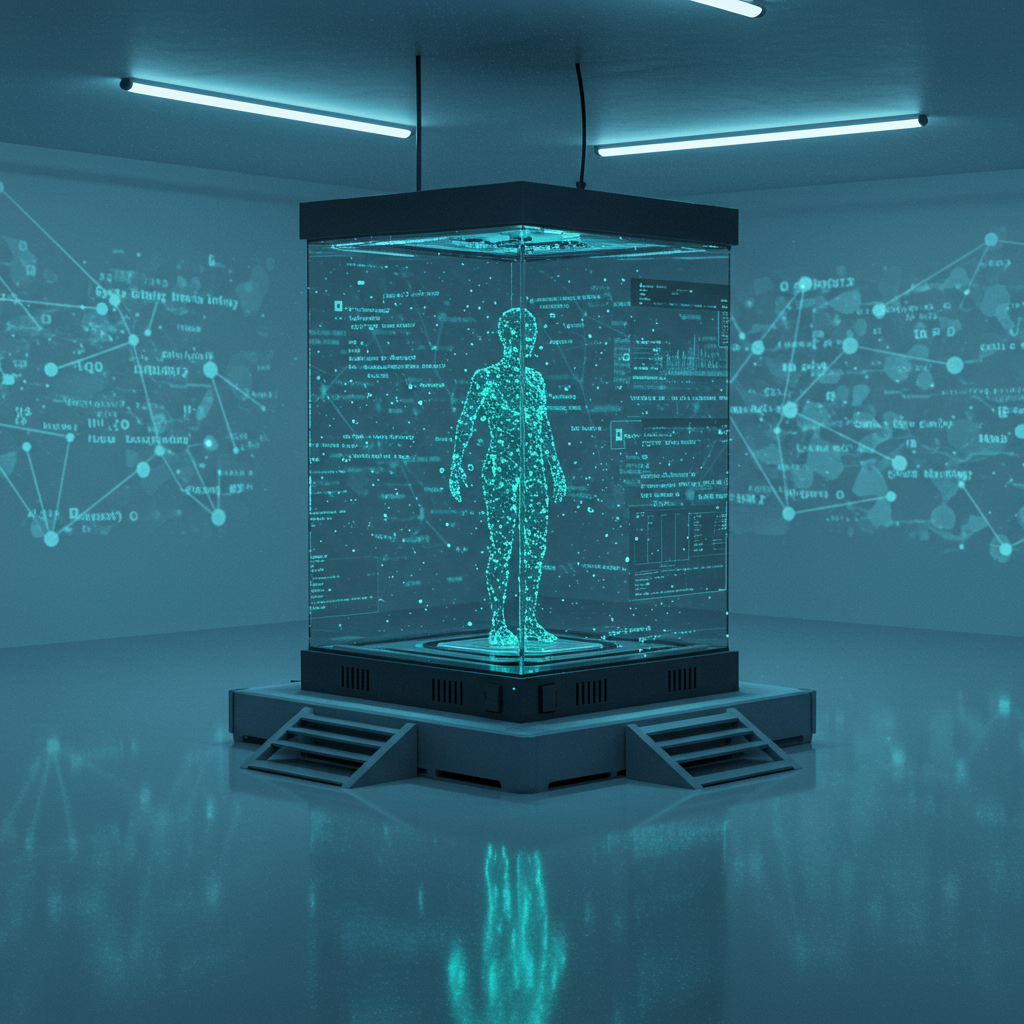Live site:
AI Coding Agent
TL;DR Project Objectives
Current State
As AI agents become more powerful, there’s a critical unsolved problem: how do we allow AI systems to operate autonomously or semi-autonomously. One use case is how do we allow agents to write and execute code programmatically without introducing significant security vulnerabilities? As a full-stack developer now dedicated to AI Engineering, I built this project to demonstrate a practical solution that bridges traditional software security practices with modern AI capabilities.
From Concept to Solution
I developed a secure isolated environment where AI Coding Agents can safely write and execute arbitrary code without risk to underlying systems or data. This creates a powerful, flexible canvas for developers to test and deploy AI agents that can programmatically solve problems through code.
Technical Skills
AI Coding Agent Workflow
The agent workflow is:
- Generate Code - based on user prompt
- Check Code Imports - this may generate errors since I’ve limited internet access
- Check Code Execution - determine if the code ran
- Evaluate Execution - evalute results of code execution
- Finish

Secure Sandbox Environment
- Isolated containers prevent these AI agents from unauthorized access. Additional agent autonomy would require more in depth architectural decisions.
- Serverless cloud containers provide a simpler and scalable infrastructure.
- Access to third-party APIs and the internet was intentionally restricted for this proof of concept.
AI Coding Agent
- The agentic workflow was implemented using LangChain and LangGraph.
- Prompt engineering was used to direct the agent’s tasks and commands.
- Found the right balance between giving the agent enough freedom to be useful, while keeping it contained.
AI Agent Analytics and Logging
- LangChain and LangGraph offer an out-of-the-box analytics platform for tracing agent steps.
- One callout feature, the ability to see the agent’s reasoning helps debug unexpected behavior.
Practical Applications
- One practical application is cybersecurity analysis by allowing vulnerability detection without system risk.
- Running the agent in an isolated environment makes it suitable for QA teams, CI/CD pipelines, and production deployments.
Tech Stack
- Python is used for both the agent workflow and the backend infrastructure.
- Isolation is achieved through serverless containers.
- The agent framework is built with LangChain and LangGraph.
Key Learnings
This project provided valuable insights into the practical challenges of deploying AI agents in production environments. The theory is one thing, but getting these systems to work reliably and safely is another challenge entirely.
Next steps
- Making it work with languages beyond Python
- Better integration with development workflows
- Getting multiple agents to collaborate on more complex tasks
- More sophisticated analytics of agent(s) behavior
- Evaluating agentic workflows based on test and inference time compute cost versus latency performance.
Why This Matters for AI Engineering
This project demonstrates how to bridge the gap between powerful AI capabilities and enterprise-grade security requirements. It showcases my ability to apply both traditional software engineering best practices and cutting-edge AI techniques to solve real-world problems.
This project represents my approach to AI Engineering: taking established software development best practices and adapting them to the unique challenges of working with large language models and autonomous agents.
